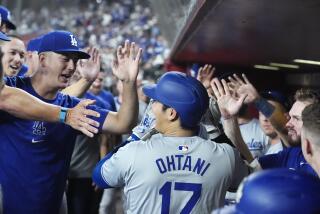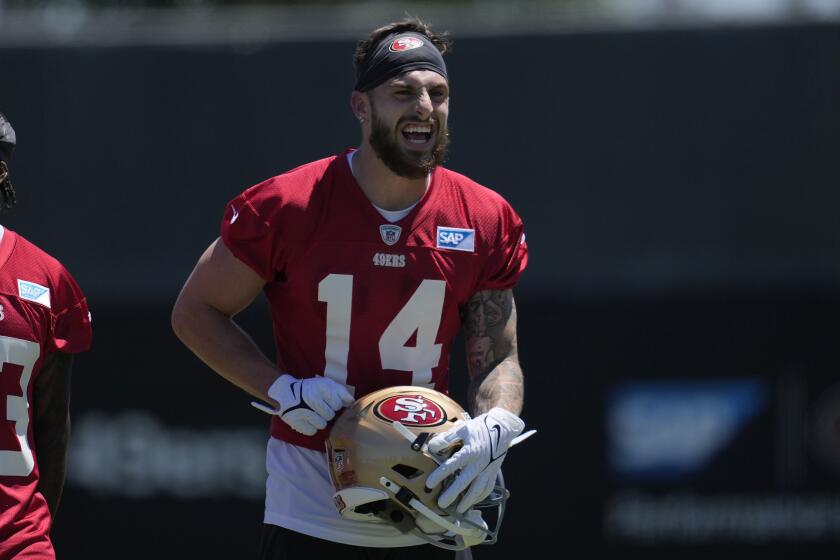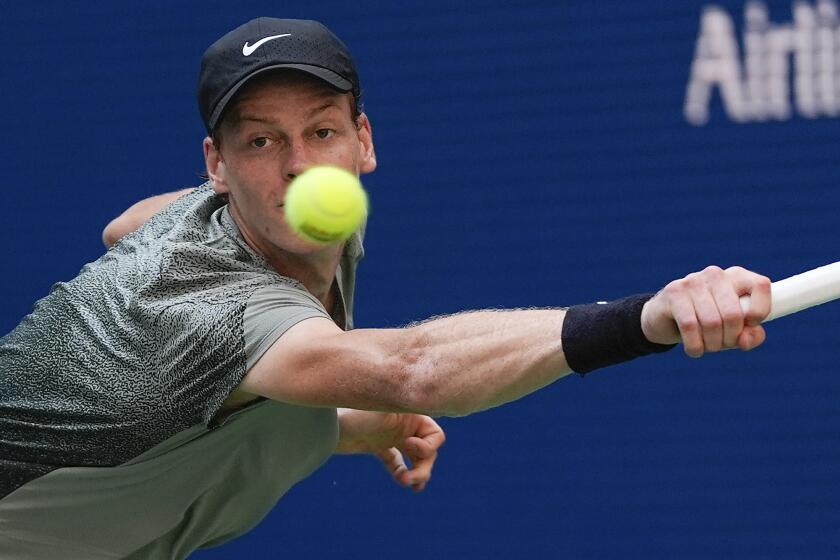Christmas Almost Came Early for John Drew
A year ago, just before the holidays, cocaine addiction aborted John Drew’s National Basketball Assn. career for the second time. This year, as he waited and wished for yet another chance, Christmas appeared to come early.
On Monday, the Washington Bullets called.
They found him in Casper, Wyo., playing for the Wyoming Wildcatters of the Continental Basketball Assn., a league composed mostly of NBA castoffs, hopefuls and players unable to let go of a dream.
Suddenly, after only nine games at this stopover on the way to better times, his exile appeared to be over. He was scheduled to catch a 6 p.m. flight Christmas Eve out of Casper and arrive in Washington Christmas day, in time to familiarize himself with the Bullets’ system before a game tonight against Atlanta.
“It would have been more than a Christmas present,” Drew said.
But when he woke up Christmas morning he was still in his Casper hotel room, left in limbo while the NBA decides whether or not he is eligible to play--and uncertain whether Christmas has come and gone or even come at all.
According to Drew’s attorney, Tom Rasmussen of Salt Lake City, the league says it must examine Drew’s history of drug abuse and treatment to determine whether or not he can be permitted to play for the Bullets under rules set forth in the league’s collective bargaining agreement.
In September, Drew completed a 90-day in-patient rehabilitation at Highland Ridge Hospital in Salt Lake City as a condition of a plea bargain on a bad-check charge. A free agent since his release from the Utah Jazz a year ago, Drew remained in Salt Lake City, played city-league ball and waited for an NBA team to call.
When none did, he signed a contract with the Wildcatters in November that pays him $500 a week--a far cry from his last NBA contract estimated at $250,000 a season--and subjects him to random drug testing. Wyoming Coach Bill Klucas said the team has tested Drew two or three times a week and found him clean.
There are at least two potential stumbling blocks to league approval of Drew’s comeback, though. First, between the time Drew was released from the Highland Ridge program--which is not an NBA sanctioned rehabilitation facility--and his arrival in Wyoming, there remains a period of roughly two months in which his activity was not monitored. Second, the league must clarify Drew’s rehabilitation history as it applies to the NBA bargaining agreement.
Under the agreement, a player may seek help for drug dependency twice and remain in the league, but a third offense banishes him from the NBA. Since the court that required Drew to undergo treatment at Highland Ridge did not specify the treatment as drug-related, there remains a question as to whether it counts against him.
Since he first entered a Baltimore rehabilitation facility in 1982, Drew has stumbled twice--once in the summer of 1984 and again last winter when he was admitted to a Pasadena treatment center. His first bout with drug dependency occurred before the league policy on drug enforcement was enacted.
“The jury’s still out,” said Rasmussen, who became Drew’s agent after defending him on the bad-check charge last summer. “We have to satisfy the league with what he’s done and they have to decide whether they deem it appropriate. Until then, they feel uncomfortable with any involvement with John.”
NBA legal counsel was unavailable for comment and Bullet General Manager Bob Ferry, whose team developed a scoring void when center Jeff Ruland was injured recently, did not return phone calls. Rasmussen figures a decision on Drew’s status remains at least a few days away.
“He’s not in a position to report immediately, so a lot of what we’re doing is to clear the way for the future,” Rasmussen said. “If John can establish the credibility of his personal life, he’s worthy of at least the 12th-man spot on somebody’s roster.”
The Bullets’ intention apparently was to sign Drew to a 10-day contract. Discussions between Ferry and Rasmussen did not touch on salary before the drug complications put the deal on hold, but Rasmussen indicated this was no time to be greedy. That the contract would include a drug-testing clause goes without saying.
“You get him into the league at this point,” Rasmussen explained. “You don’t try to stick anybody up. The stipulations that follow John are so apparent you don’t even have to say them. You can test him for drugs. What might be big issues with other people are givens with John.”
For a scorer like John Drew, the CBA hardly tests the limits of his offensive ingenuity. He scored 41 points in his first game and has averaged 30 since, even though Klucas insists Drew has gotten his points “in the offense”--which means he has exercised some degree of restraint.
He is 31 now, a two-time NBA All-Star who learned to adjust to a more limited role when he played behind Adrian Dantley with the Jazz. But if his addiction has made him a questionable commodity in the marketplace of basketball services, his skills make him an attractive one nonetheless.
History has proven NBA management can be hypnotized by talent, no matter how troubled. Remember Bernard King? Quintin Dailey? Micheal Ray Richardson? David Thompson? John Lucas? Wasn’t it just a matter of time before someone decided to take a chance on John Drew?
“You just can’t go out and get a consistent scorer,” Drew said. “They’re hard to find. You’ve got (Alex) English, Dantley, Kareem (Abdul-Jabbar), (Larry) Bird--but other than those guys, there aren’t a lot of guys who can do it to you every night. You need a scorer in basketball and I can score. I’m not here in Wyoming because I can’t play. I’m here for other reasons. I’ll be back soon. I pray to God I am.”
Drew knows this chance, if it finally comes, will be his last chance.
“It’s all I need,” he said. “I know my chances, I know what’s at stake. I’ve made a commitment within myself. Before, I hadn’t totally committed myself. Either you don’t do the stuff or you do. There are no social users. I knew that, but I hadn’t got it in my heart that I simply couldn’t do it. Sometimes your head plays games with you. You’ve got to get it in your heart.
“I’m just a person who had a problem. It came back on me. I allowed it to come back on me. I have no assurances, no guarantees I can give anybody. You have to take my word. If there was some magic cure for this, everybody would use it. But it doesn’t work like that. I’m going to make this work, with or without basketball.”
Jazz Coach Frank Layden, who stood by Drew during previous rehabilitation, said last winter Drew’s best course might be to adjust to life without basketball before attempting another comeback.
Drew, who left tiny Gardner-Webb College in 1974 after only two years to be drafted by Atlanta as a hardship case, disagrees with that theory. The fast-lane life style of the NBA may present high risks for chronic drug abusers, but it isn’t the source of the problem, he contends.
“I don’t think the NBA was bad for me,” Drew said. “I could have had my problems anywhere. Basketball didn’t cause my problems. I caused my problems myself. I’ve heard it a million times about the NBA lifestyle. I wish I could have put my problems off on that. But it’s up to the individual.”
More to Read
Go beyond the scoreboard
Get the latest on L.A.'s teams in the daily Sports Report newsletter.
You may occasionally receive promotional content from the Los Angeles Times.






